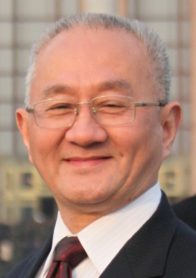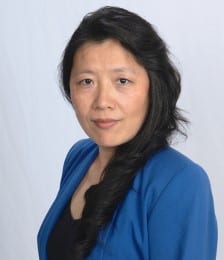
Prof Yusheng Xue
State Grid Electric Power Research Institute, China
Professor Yusheng Xue graduated from Shandong University, China in 1963 and received a PhD degree in 1987 from the University of Liege, Belgium. He has been an elected academician of the Chinese Academy of Engineering since 1995. He is now the Honorary President of State Grid Electric Power Research Institute (SGEPRI or NARI), China. He is the Editor-in-Chief of Automation of Electric Power System (in Chinese, EI indexed) and that of Journal of Modern Power Systems and Clean Energy (in English, SCI indexed).
Holistic Reduction Thinking Based on Trajectory Dynamics
Through practical applications in different complex systems, including the Lorenz chaos, power system stability, broadband oscillations, and optimization of both target and paths for carbon emissions and carbon neutrality, this presentation demonstrates how the trajectory dynamics can be applied to rigorously integrate both the global view of holism, and the mechanism view of reductionism. Without losing or distorting any information on the complete trajectory, the deep integration of holism and reductionism is realized, and the concept of “linear local reduction” is sublimated to the level of “nonlinear integral reduction”, also A bridge was built between the natural and social sciences.
The “trajectory dynamics” proposed by the presenter explores the methodology of two-way fusion between holism and reductionism. Its key points include: (1) Modeling of related multi-domain links; (2) Through a hybrid sand table deduction platform that can support causal model, multi-agent model and real human participation at the same time, all the information of the overall system in the evolution process is obtained, thus providing complete dynamic information support for the overall reduction analysis; (3) With theoretical research on specific problems, the dynamic behavior of a high-dimensional overall system is defined as the aggregation of a series of two-dimensional behavior patterns, and the corresponding reversible linear transformation matrix is established, so that the information entropy is unchanged after the transformation. The overall trajectory is rigorously mapped or projected as phase plane trajectories of a set of two-dimensional imaging system, each imaging system reflects one of the dynamic patterns of the overall system behavior; (4) Using segmented linearization technology, the classical reductionist method is extended to the time-varying nonlinear system, and the time series of the feature indicators of each behavior pattern are extracted from these phase plane trajectories to describe the characteristics of the subsystem; (5) Aggregate the set of feature indicator sequence of each subsystem, jointly characterize the dynamic behavior of the overall system, and analyze the overall mechanism of problems in specific fields, so as to achieve the entropy-preserving fusion of holism and reductionism.

Jessica Bian
President, IEEE Power & Energy Society
Dr. Jessica Bian is the President of the IEEE Power & Energy Society (PES). She is a visionary leader and architect, has spearheaded electric industry’s reliability metrics and grid risk assessment. Currently she is the Vice President of Grid Services at Grid-X Partners. Before that, she was with the US Federal Energy Regulatory Commission (FERC), Washington, DC. Previously, she was the Director of Performance Analysis at North American Electric Reliability Corporation (NERC) in Atlanta, Georgia. Under her leadership, a total of 18 industry-wide reliability indicators were established to determine grid reliability, adequacy, and associated risks. She is widely recognized as a pioneer and trusted world leader in the field.
Advancing Innovation to Meet Societal Challenges
What is driving our industry to improve performance? As resilience becomes a critical factor for ensuring a sustainable, clean and reliable grid in the face of significant change and increasing risks, this presentation will provide an overview of current state vs. long-term strategy for managing the challenge of measuring resilience, the value it adds to reliability and how to balance the integration of risk, regulatory and customer concerns as it evolves. It will also discuss general ideas for defining resilience metrics, applying these under differing conditions (extreme weather, climate related risk) and how this will benefit the customers of electric power.

Prof Akhtar Kalam
Victoria University, Australia
Professor Akhtar Kalam is a Professor and former Deputy Dean at the Faculty of Health, Engineering and Science at Victoria University. He is a graduate from the Universities of Bath (UK), Oklahama (US) and Aligarh (India) in Electrical Engineering. He is a Fellow and member of the Institute of Engineers (Australia, UK & US). He is the author of many books, publications, articles and papers in his 27-year academic career.
Smart Power Grid in the 21st Century
Smart energy is the application of digital information technology to optimize the electrical power system. The smart grid is the product of applying smart energy technology to electrical power delivery and generation. Smart energy technologies are beginning to transform the power network into a smart grid capable of meeting 21st century economic, security and environmental challenges. But the smart grid still faces hurdles, in particular the need for extensive field testing to prove new energy systems and regulatory reform to remove financial disincentives to adopting new technologies.
A host of new smart energy devices and systems are emerging that can take pressure off overloaded grid infrastructure and power costs, dramatically improve grid reliability and security, and accelerate the growth of cleaner power generation. Smart energy is defined as the application of digital information technology to optimize electrical power generation, delivery and end use. The smart grid is the product of applying smart energy technology to systematically optimize power delivery and generation. This presentation will overview a number of smart energy technologies and how they are beginning to transform the electrical power network into a smart grid capable of meeting 21st century economic, security and environmental challenges.
